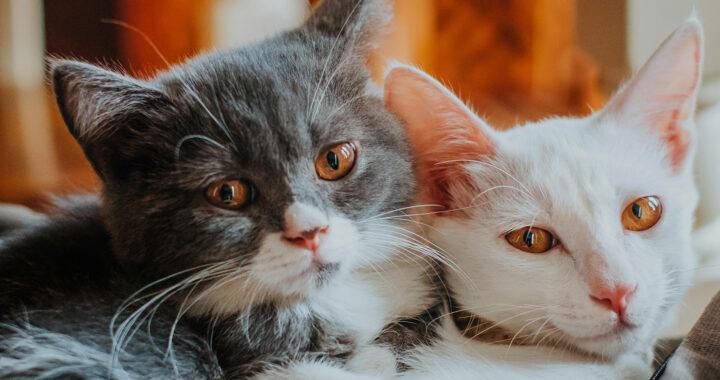A team of researchers headed by K. K. Coleman and J. F. Gomez documented an outbreak of avian influenza or bird flu among domestic cats living near a dairy farm in Tulare, California. Their research challenged long-held assumptions about the lethality of the virus in felines and provided evidence that timely treatment can improve outcomes for infected animals.
Inside a Tulare County H5N1 Outbreak: The Survival of Domestic Cats Challenges Euthanasia Guidance
Outbreak Setting and Initial Investigation
An in-depth look at how a household near a California dairy farm became the center of an unexpected influenza investigation and why location, timing, and veterinary observation were crucial to identifying the first signs of infection in domestic cats.
Euthanasia is the most practical response when domestic cats are diagnosed with H5N1 avian influenza. Veterinarians and public health agencies favored immediate removal of infected animals to prevent suffering, limit transmission risks, and address uncertainties in treatment effectiveness and containment strategies. Coleman et al. challenged this presumption.
The study focused on 4 domestic cats that lived in proximity to dairy cattle in Tulare County, where confirmed H5N1 outbreaks had occurred in late October 2024. Reports noted that the virus likely circulated in surrounding livestock and wildlife populations to create an environment with elevated spillover risk. The cats shared a household located near affected farms.
Clinical symptoms were documented from late October to mid-November 2024. Each cat showed signs like lethargy, respiratory distress, and neurological abnormalities. The most detailed case involved a male neutered long-haired cat aged 1 year and 7 months. The owners described him as unresponsive, reluctant to move, and unable to walk normally.
Diagnostic testing confirmed H5N1 infection through viral isolation and polymerase chain reaction assays. Sequencing data linked the virus to the clade circulating in the region. Supportive care and the antiviral oseltamivir were administered to multiple cats in the early stages of illness. Serum samples were collected to monitor viral loads and the development of antibodies.
Documented Outcomes and Clinical Results
Detailed outcomes reveal how early antiviral use, symptom patterns, diagnostic testing, and environmental exposure shaped the trajectory of infection and recovery. This challenges assumptions about fatality and management of H5N1 in companion animals.
Findings from the entire documentation addressed the prevailing assumption that H5N1 infection in cats was uniformly fatal or required euthanasia. Outcomes specifically demonstrated that survival was possible when veterinary intervention and antiviral treatment occurred early in the disease course. The following are the important findings:
• Survival Rate With Early Treatment
Cats that received veterinary attention shortly after symptoms emerged demonstrated clear potential for recovery. The combination of oseltamivir and supportive clinical care allowed infected animals to regain normal function without lasting health deficits, showing that lethality was not guaranteed when intervention occurred at an early stage.
• Development of Measurable Immunity
Surviving cats produced neutralizing antibodies that persisted for about 3 to 4 months after recovery. This immune response indicated short-term protection against new infection and provided measurable and actual evidence that naturally-acquired resistance could result from successful treatment rather than fatal disease progression.
• Severe Symptoms Before Intervention
Each observed case exhibited significant illness before clinical intervention. Severe clinical symptoms were consistently present. This demonstrated the aggressive nature of the H5n1 virus in feline hosts. It also reinforces the importance of rapid detection and intervention to improve therapeutic outcomes and prevent further deterioration.
• Infection and Environmental Exposure
Note that the cats lived near Tulare County dairy farms that experienced confirmed H5N1 outbreaks in October 2024. Their proximity to livestock and potentially contaminated surroundings suggested that geographic and environmental factors contributed to spillover events and heightened transmission risk within that household.
• Treatment as an Alternative to Euthanasia
The study challenged the presumption that euthanasia must follow the diagnosis of H5N1 or bird flu in cats. Evidence showed that the timely use of antiviral medication and supportive care produced viable recoveries. This demonstrated that preservation of life was achievable and appropriate under properly managed veterinary conditions.
Considerations and Recommended Actions
The results extend beyond a single household, offering guidance for veterinarians, public health officials, and pet owners while reframing how treatment decisions, surveillance efforts, and strategies can adapt to evolving influenza risks in domestic species.
Remember that the survival of cats infected with H5N1 is possible. This encourages a reassessment of default response strategies. Veterinary professionals can reference the clinical interventions and outcomes documented by Coleman et al. to support antiviral intervention rather than immediate euthanasia in appropriate cases involving early detection.
The presence of neutralizing antibodies for several months following recovery indicated temporary protection against reinfection. While the duration of immunity remained uncertain beyond that period, the findings suggested a measurable immune response that could reduce viral persistence in treated animals and in the surrounding environment.
It is also worth mentioning that Coleman et al. underscored the importance of detecting symptoms quickly so that antiviral therapy could be administered before severe disease progression. Their paper also noted the relevance of surveillance, biosecurity practices, and guidance for pet owners since pets have the potential to become intermediate hosts.
FURTHER READINGS AND REFERENCES
- Gomez, J. F., Bemis, I. G., Shittu, I., Gray, G. C., and Coleman, K. K. 2025. “Outbreak of Highly Pathogenic Avian Influenza A (H5N1) Among House Cats: A Case Series Involving Oseltamivir Treatment.” One Health. 21: 101211. DOI: 1016/j.onehlt.2025.101211
